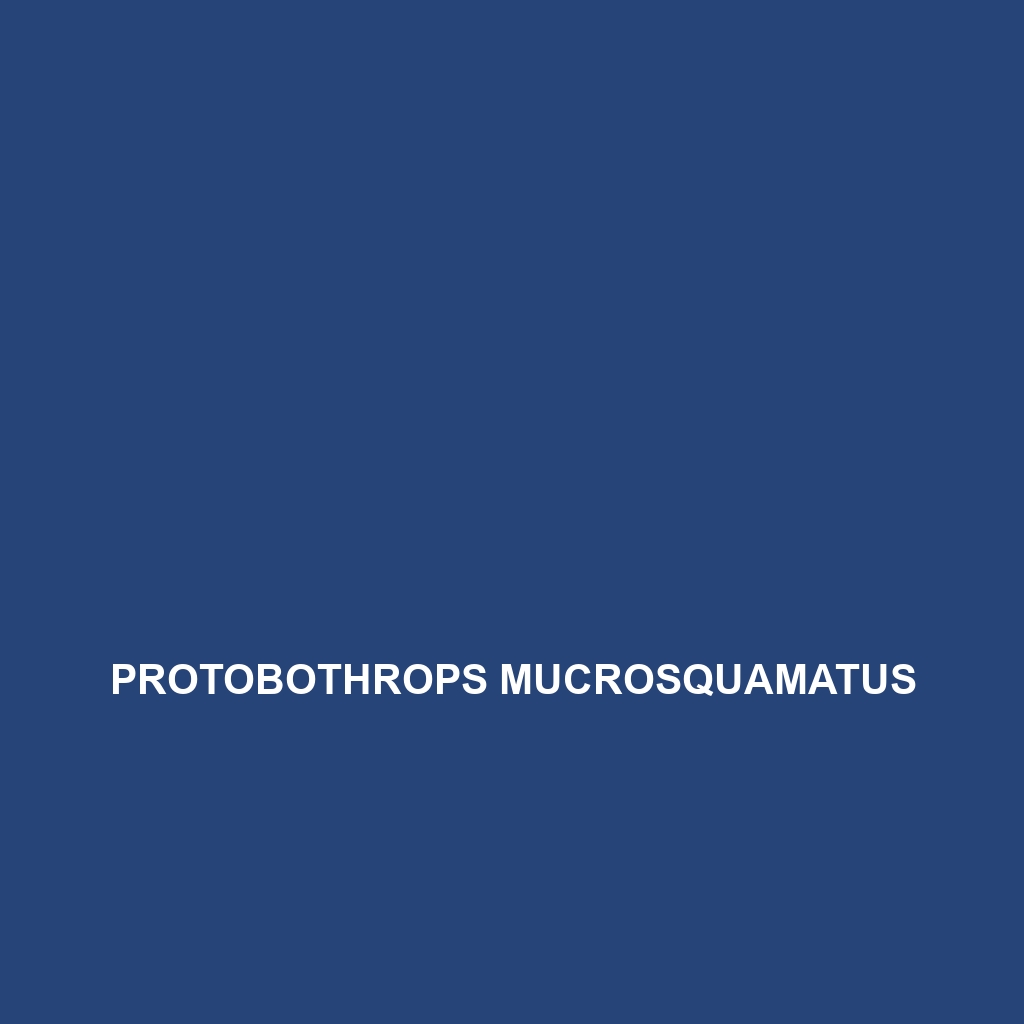<b>Protobothrops xiangchengensis</b>, known as the Xiangcheng pit viper, is a striking, carnivorous snake native to southern China, typically measuring 1 to 1.5 meters in length with robust green or brown bodies adorned with dark patterns. This nocturnal predator inhabits temperate forests and mountainous regions, utilizing its excellent camouflage and heat-sensing pits to ambush small mammals and birds, while playing a crucial role in maintaining the ecological balance of its habitat.
Tag: predator-prey dynamics
Protobothrops mucrosquamatus
<b>Protobothrops mucrosquamatus</b>, commonly known as the sharp-nosed pit viper, is a nocturnal, ovoviviparous snake native to humid tropical and subtropical forests of East and Southeast Asia, exhibiting strong camouflage and a potent hemotoxic venom, primarily feeding on small mammals and birds. With distinctive zigzag patterns and a sharp, elongated snout, this solitary predator plays a crucial role in maintaining ecological balance within its habitat.
Prosymna stuhlmanni
<p>Discover the <b>Prosymna stuhlmanni</b>, also known as Stuhlmann's Snake, a non-venomous species native to the lush rainforests of East Africa. With its slender body, distinctive speckled coloration, and nocturnal habits, this fascinating predator plays a vital role in maintaining ecological balance by preying on invertebrates.</p>
Prosymna semifasciata
<strong>Prosymna semifasciata</strong>, also known as the striped burrowing snake, is a slender, nocturnal insectivore found in the rainforests and savannas of eastern Africa. With distinctive longitudinal stripes and a burrowing lifestyle, this species plays a vital role in its ecosystem by regulating insect populations and enhancing soil health.
Prosymna lisima
<p><b>Prosymna lisima</b>, known as the lizard snake, is a slender, non-venomous species found in East Africa's rainforests and savannas. Its distinct olive green to brown coloration provides excellent camouflage, while its nocturnal behavior and insectivorous diet make it a vital predator in its ecosystem.</p>
Proscelotes aenea
<p><b>Proscelotes aenea</b>, commonly known as the Bronze Bush Lizard, is a striking insectivore found in the diverse habitats of southern Africa, including rainforests, temperate forests, and savannas. Notable for its glossy scales and agile movements, this nocturnal species plays a vital role in regulating insect populations while showcasing fascinating courtship behaviors during mating season.</p>
Proctoporus laudahnae
<p><b>Proctoporus laudahnae</b> is a slender, nocturnal lizard native to the rainforests and temperate forests of Peru, known for its vibrant coloration and distinct scale patterns. As an insectivore, it plays a crucial role in its ecosystem by regulating insect populations, while its ability to change colors enhances its survival against predators.</p>
Pristurus simonettai
<p><b>Pristurus simonettai</b>, or Simonetta's Pristurus, is a vibrant green or brown lizard native to Madagascar's coastal ecosystems, thriving in humid rainforests and savannas. This nocturnal insectivore plays a crucial role in pest control and features unique adaptations like a prehensile tail and the ability to change color for camouflage.</p>
Pristurus schneideri
<b>Pristurus schneideri</b> is a slender, nocturnal lizard native to the Arabian Peninsula, known for its distinct light brown to gray coloration with darker spots, and its ability to thrive in rocky, arid habitats. This insectivorous species plays a vital role in controlling insect populations and exhibits fascinating mating behaviors during the breeding season.
Pristidactylus scapulatus
<p><b>Pristidactylus scapulatus</b>, commonly known as the Scapular Skink, is a striking insectivorous lizard found in South America's temperate forests and savannas. This diurnal species, measuring 10 to 15 cm, is recognized for its distinctive brown and black striped pattern and plays an essential role in regulating insect populations while serving as prey for larger predators.</p>









